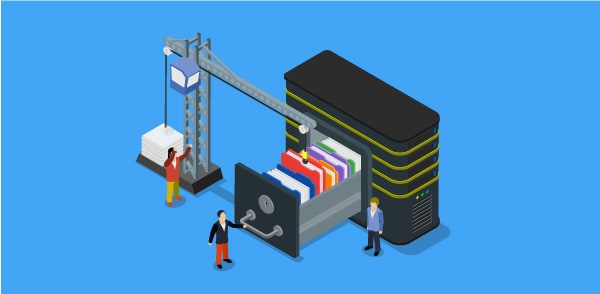One of the best things about using the cloud for data storage is that if things were to go wrong, you have a possibility of finding recourse. Microsoft Azure’s innovative site recovery system can help you build websites and store data with a greater sense of insurance and security.
Azure is a cloud computing service that was designed by Microsoft to serve a wide variety of different functions. The service is particularly useful for building, testing, and properly managing various applications. It is compatible with several different programming languages and is also made to be compatible with outside software providers.
The Azure Site Recovery service empowers its users to back up their data in a way that is both safe and easy. Even in the event of severe outages or other types of IT interruptions, the progress you have made with your development efforts will remain preserved through the use of virtual machines (VMs).
Microsoft’s unique recovery service is fairly straightforward. However, before you commit to signing up for such a program, there are a few important things you should know.
Azure Site Recovery is an essential piece of your BCDR strategy
If you are involved in any industry that is highly dependent on the use of technology, one of the most worthwhile things you can do is create a strong BCDR strategy. BCDR—which stands for business continuity and disaster recovery—is your business’ specific plan for what you will do in the event of an IT disaster.
Azure Site Recovery service enables you to keep your business apps and other workloads running even in the event of system outages. Because your applications are replicated at a second location, the system can essentially work for an unlimited amount of time. Once your initial location is able to run again, you can seamlessly switch back to the work you were doing.
Azure Site Recovery has numerous innovative features
In general, Microsoft’s innovative new recovery system has been well-received by critics. There are numerous features that make it particularly useful.
- Azure VM Replication makes it easy to set up a recovery program using multiple locations
- Workload Replication allows you to replicate your workload in several different ways including through the use of physical Windows and Linux servers
- App Consistency makes it possible to easily replicate recovery points including transactions that are already in progress
- Easy Testing enables you to run recovery tests without interrupting your current work
- Customizable Options allow you to build a specific plan that can addresses your organization’s unique set of needs
When compared to other systems, Azure Site Recovery is generally considered to be among the most adaptable, reliable, and useful of its kind. The system can be easily integrating into complex networks and is also able to effectively function on the multi-tier level.
Azure Site Recovery is easy to set up and easy to manage
Microsoft wanted to make a recovery system that would be easy to set up and easy to manage. The set up process involves three basic steps.
Managing Azure Site Recovery is simple because, as time goes on and new features are released, the system will update automatically. Additionally, the system manager will have numerous opportunities to adapt the sequence and other features to meet their needs. Having the power to run tests without an issue, utilize multiple virtual machines (VMs), and maintain on-premise applications in the event of an outage are all very important.
Azure Site Recovery can be used with multiple different systems
Another reason why Azure Site Recovery has been so widely praised is the fact that—even when compared to other Microsoft SaaS products—Azure Site Recovery is incredibly flexible.
The most noticeable evidence of Azure Site Recovery’s flexibility is the fact that works with almost every major coding language. This can be particularly useful for development teams that are multi-lingual. In addition to working on Windows systems, Azure Site Recovery is also compatible with Linux, VMWare, Hyper-V virtual machines, and several others. Again, this degree of adaptability enables IT teams to access more possibilities.
Azure Site Recovery can help your business save on infrastructure costs
If you want your business to be technologically secure, then you will need to find some way to develop an effective BCDR strategy. The best BCDR strategies are those that are simultaneously able to keep your organization secure while also minimizing total costs.
If you choose not to use Azure Site Recovery, then you will likely need to set up an in-house recovery system of your own. Though some people may prefer this option because they believe it leaves them in control, in reality, it would require you to build redundant infrastructure and end up paying more for less.
Azure Site Recovery can help your business minimize downtime
The reason why Azure Site Recovery is such a widely used system is because it is backed up by an SLA of over 99.9%. Additionally, as is the case with most major Microsoft systems, you will also gain access to an equipped and knowledgeable help team that is available 24 hours a day.
In the past, outages and IT interruptions would be absolutely devastating for most firms. There was a point in time where total recoveries would require millions of dollars and several months of work. Now, data can be recovered instantly and your organization can be saved.
Companies that are involved in the information technology sector are always looking for ways to gain a competitive advantage. Additionally, they are always looking for ways to protect themselves against the unexpected. Microsoft’s Azure Site Recovery system is an innovative way you can affordably acquire the infrastructure help you need. The system has a remarkably high recovery point objective (RPO) and is only getting better as time goes on.

